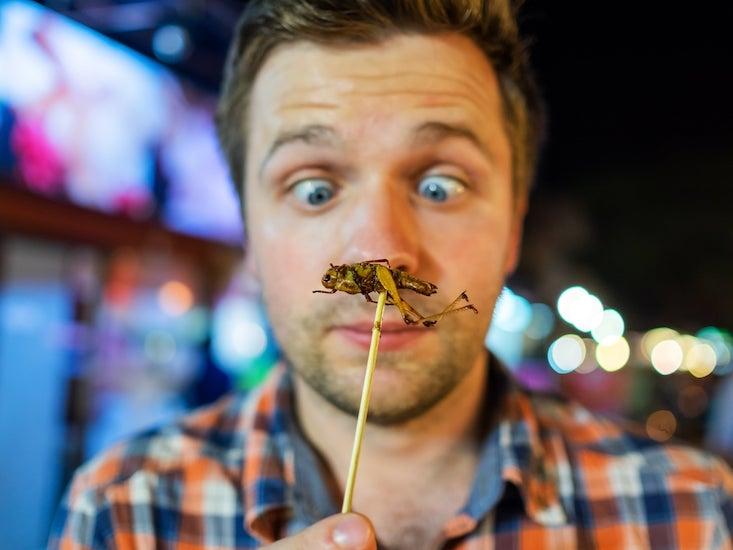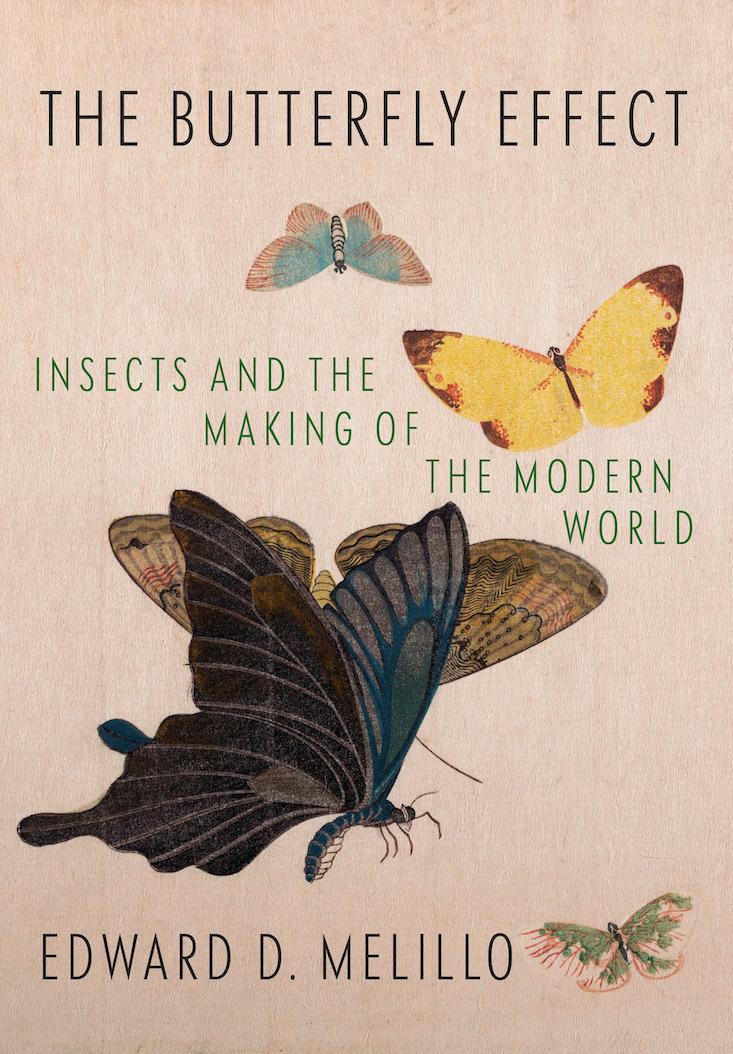
In his new book, The Butterfly Effect: Insects and the Making of the Modern World, Edward Melillo calls some insects “little laboratories,” the various productions of which have supported our material world for millennia. The “butterfly effect” refers, of course, to chaos theory and a 1972 talk, from Edward Lorenz, on whether the flap of a butterfly’s wings in Brazil could set off a tornado in Texas. The term captures interconnectivity among seemingly separate or disparate phenomena.
In The Butterfly Effect, Melillo, a professor of history and environmental studies at Amherst College, brings up what meteorologists call “teleconnections.” For example, when El Nino storm events off the coast of Peru provoke extreme weather clear across the planet. He delves into connections like this involving nature, material goods, globalization, and science. While the synthetic age of the last century ushered in many alternatives to insect goo, there has been a more recent return to the genius of their toil, which Homo sapiens has yet to improve on. Melillo traces the history of these bugs and their products as a query into modernity’s attainments and its discontents.
Synthetic chemicals have marinated us in a fatal brew of our own creation.
“Most of us are aware,” he said, “that bees, butterflies, beetles, and flies are integral to three-fourths of the world’s flowering plants and a third of our food crops. It isn’t as widely understood that tiny creatures like lac bugs, silkworms, and cochineal insects have played fundamental roles in global development.”
Nautilus caught up with Melillo to get a better sense of how much we rely on insects that many of us know little about.
You call these bugs laboratories, which is provocative when we consider they have six legs each and often convene by the hundreds of thousands.
Yes, female lac bugs—Kerria lacca—swarm in gigantic numbers, laying eggs on fig and acacia trees. They secrete a resin that for thousands of years has been harvested and filtered, made into sticky sheets that eventually dry and are cracked into shell-like flakes that inspire our word for the product: shellac.
You had your shellac bug epiphany listening to an Ella Fitzgerald recording.
Yes, “in the groove”! The original 78 rpm records that made transmission of recorded sound possible were made of shellac. I realized that the production of this substance reached back to some original moment when indigenous Southeast Asians figured out human purposes for this stuff. The innovation of one age depended on a traditional history of local, applied knowledge, seemingly far from its source.
You date East Indian trade in shellac back to the 1500s if not earlier.
Shellac was used in everything from Ayurvedic healing tinctures to varnishing furniture, and Europeans were eager customers.
And the stuff was not easily replicable.
No, and this is a big theme in my book. Shellac was and is an insect commodity, made by the insects. Supervising and managing insect production of shellac depends on an intimate knowledge of insect life cycles—the timing of reproduction and egg-laying, regional weather patterns, best harvesting practices and so on. In the 1950s, science came up with synthetic polymers that in large part replaced lac secretions as the basis of proto-plastics. But then came a backlash—environmental toxicity. Shellac has reemerged as a biodegradable, nontoxic alternative and is widely used in pharmaceutical products, on the grocery shelves, and in many types of cosmetics.
Thanks to the Silk Road, the contribution of silkworms to the history of global trade is more widely appreciated.
Like the secretions of lac bugs, those of Bombyx mori have fundamentally imbued and comprised our material culture. The making of silk fabric based on the production of caterpillars extends to 2640 B.C.E., when a Chinese empress first appreciated the strength and delicacy of their threads. Silk fabric made its way around the globe, lending beauty and tensile strength to body coverings and more.
And then nylon came along. But I’d rather have a blouse made of silk.
Silk has proved inimitable. Its strength and toughness outperform synthetic counterparts. And who can wonder. Silkworms have been doing their thing for more than 300 million years.

There’s an “ew” factor around bug products. For example, that big kerfuffle when it was discovered that Starbucks was using ground up cochineal bugs to color one of its red drinks.
Another ancient-to-modern story, the crushed bodies of cochineal insects (Dactylopius coccus) have provided a brilliant carmine dye for worldly goods, including papal vestments and strawberry yogurt. For more than 250 years, the trade in cochineal insects was a driver of the Spanish Empire’s transatlantic trade. The process of globalization helped transfer cloth-coloring knowledge across the Americas. Cochineal insects have greatly added to the beauty of the world, but maybe people don’t like the idea of drinking them. (Starbucks replaced the cochineal with a vegetable dye.)
Your book makes it clear that the stunning advancements of Homo sapiens have come with a dark set of consequences. But maybe insects will help us out once again.
Synthetic chemicals that helped usher in the age of abundance after World War II have also marinated us in a fatal brew of our own creation—toxicity that is impairing human health and also speeding calamitous wild insect declines. Domesticating some insects and using their natural products is a viable alternative in many cases. And as the human population expands, we are going to have to find better ways to feed ourselves without further decimating the environment.
I know where you’re going with this and it’s ruining my appetite.
One pound of crickets provides three times the protein, as well as more iron and nutrients, than a pound of beef. On other fronts, shellac is being newly purposed to address our problem with electronic pollution—it can be treated like a plastic, but it’s not toxic. It will be possible to use shellac to create micro boards, miniature electronic landscapes that can be inserted into a human body, to help deliver drugs or data to a doctor. We often forget our connections with our fellow planetary inhabitants, but our lives may depend on them.
Mary Ellen Hannibal is the author of Citizen Scientist: Searching for Heroes and Hope in an Age of Extinction and The Spine of the Continent: The Race to Save America’s Last, Best Wilderness.






























